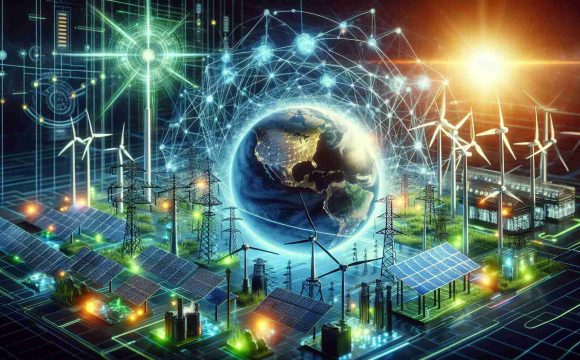Florida’s Solar Transformation in 2024
In an astonishing leap towards renewable energy, almost 30,000 Florida residents adopted solar power in 2024, elevating the total installations to over 253,000 across the state. This year alone, Florida successfully generated 3.1 gigawatts (GW) of solar energy, closely approaching last year’s record of 3.2 GW, positioning it second nationally, just behind Texas.
A recent report from the Solar Energy Industries Association (SEIA) and Wood Mackenzie highlights the 43% drop in solar power costs over the past decade. This decline has made solar energy more accessible and viable, as large utility companies find it cost-effective to invest in solar with storage solutions.
Reflecting on the progress, Stephen Smith, director of the Southern Alliance for Clean Energy, noted a significant shift in Florida’s investor-owned utilities, especially praising NextEra Energy’s Florida Power & Light (FPL), which has initiated ambitious solar projects to meet its “Real Zero” carbon emission goals.
FPL aims to expand its solar capacity to 90,000 megawatts while integrating battery storage and transitioning to greener energy sources. As Florida’s energy profile evolves, solar is projected to account for 28% of its electricity by 2032, a significant rise from the current 8%. The transition may even position Florida as the premier state for residential solar installations by 2028, challenging California’s longstanding dominance in solar energy.
The Solar Revolution: Florida’s Energy Future Looks Bright in 2024
Introduction
As Florida continues its dramatic shift toward renewable energy, the state is setting the stage for a solar revolution powered by innovation and ambitious goals. With almost 30,000 new solar installations in 2024, Florida has surpassed 253,000 total setups, solidifying its place as a leader in the solar energy landscape.
Key Statistics and Trends
In a remarkable achievement, Florida generated approximately 3.1 gigawatts (GW) of solar energy this year, coming close to last year’s record of 3.2 GW. This achievement positions Florida as the second leading state for solar energy generation, right behind Texas.
Noteworthy is the significant 43% decrease in solar power costs recorded over the past decade, as reported by the Solar Energy Industries Association (SEIA) in collaboration with Wood Mackenzie. This dramatic reduction has made solar energy systems more accessible to residents and utilities alike.
Major Players in Florida’s Solar Growth
A driving force behind Florida’s solar expansion is NextEra Energy’s Florida Power & Light (FPL), which has embarked on several ambitious projects aimed at reaching its “Real Zero” carbon emission targets. FPL has set its sights on expanding its solar capacity to an impressive 90,000 megawatts. This effort includes integrating battery storage solutions to enhance the resilience and reliability of solar energy supply.
Future Projections
Florida’s energy profile is on track to see solar energy account for 28% of its electricity mix by 2032, a substantial increase from the current 8%. This trajectory not only positions Florida as a strong contender for residential solar installations but also envisions a potential challenge to California’s current leadership in solar power by 2028.
Pros and Cons of Solar Energy in Florida
Pros:
– Financial Incentives: With decreasing installation costs, more homeowners can afford solar systems.
– Job Creation: The growth of solar infrastructure generates new jobs in the renewable sector.
– Environmental Impact: Transitioning to solar reduces reliance on fossil fuels, lowering carbon emissions.
Cons:
– Intermittency Issues: Solar energy production is dependent on weather and time of day, necessitating effective storage solutions.
– Initial Cost: While prices are decreasing, the upfront cost can still be a barrier for some homeowners.
Innovations in Solar Technology
As Florida escalates its commitment to solar energy, ongoing innovations are improving the efficiency and cost-effectiveness of solar technologies. Advances in battery storage systems are enabling more effective energy management, allowing residents and utilities to store excess energy generated during the day for use during nighttime or cloudy periods.
Security Aspects
With the rise in solar installations, cybersecurity has emerged as a crucial consideration. As more utilities utilize smart grid technologies to manage energy production and distribution, safeguarding these systems from cyber threats is essential to ensure a stable and secure energy future.
Conclusion
Florida’s bold strides towards solar energy are paving the way for a greener, more sustainable future. With collective efforts from utilities, government, and citizens, the Sunshine State is on track not just to enhance its renewable energy profile but also to lead the nation in solar innovation. As these trends continue to evolve, Florida’s position as a hub for solar energy may profoundly impact the country’s transition toward a clean energy economy.
For more information on the solar energy landscape, check out SEIA and stay updated on Florida’s renewable initiatives.







